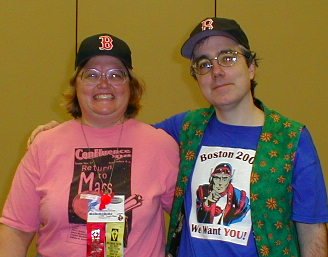The Skinner by Neal Asher
The story takes place in the far future. Most of the human worlds are part of the Polity (which stays enough in the novel’s background that you don’t get a real good feel for what it is, though I gather that you do in Asher’s other works). There are several other intelligent species in the universe, including one other earth-born species: hornets, it seems, are a hive mind. There are also AIs and robots (sometimes called drones, reminiscent of Banks).
Seven hundred years before the time of the novel, humanity had fought against the Prador. The Prador are vicious killers, even killing their own young in competition. The Prador had the technology to turn humans into literally mindless puppets, destroying their brains and controlling their bodies. A small group of renegade humans, let by Spatter Jay Hoop, had led an operation to sell humans to the Prador, killing about ten million in the process. Sable Keech, who died at the time of the war but was reanimated, has the mission to track down and kill the remaining renegades. He has tracked the last two to the planet Spatterjay, where Hoop had originally run his slaving operation.
Spatterjay is like
Arriving at the same time as Keech – and traveling with him for part of the time –are Erin Tazer, who has returned to visit the Old Captains (the oldest, strongest survivors of the leech virus) and figure out if she really wants to be immortal, and Janer, who is a human in the pay of the hornet hive mind (which, it turns out, wants to establish a base on Spatterjay). But they are pursued by Rebecca Frisk, Hoop’s lover and the other survivor of the renegades, who with a group of mercenaries, plans to kill Keech. And an Prador elder, who wants to kill all the Old Captains, who are the last living witnesses to what happened in the Prador war.
This is all the start to a plot that features some interesting twists and turns. There is a lot of real strangeness here and a lot of invention, but Asher does a good job of pulling it off. The strange background and the plot mesh well together, neither distracting from the other, both important parts of how the book makes its impact.
The are a few scenes that are somewhat disturbing. Frisk is a homicidal maniac, who delights in torturing her victims to death. Hoop was worse in his heyday, though what remains of him by the time of this book, while a disturbing, nasty monster, is not as unsettling as Frisk. (This, in a way, is also reminiscent of Banks, since many Banks books contain at least a scene or two that is rather nasty and often gross. Consider the execution cell in Consider Phlebas, for example, which seemed like something dreamt up by a nasty-minded 12-year old.) But if Asher steps over the line in creating this discomfort, he does do it to help set up the story, nor does he do it often enough to detract from the story. (Banks doesn’t either. He’s one of my favorite writers, even if there are occasional scenes in his books that bother me long after reading the book.)
Overall, Asher isn’t up to the level of Banks (few are). But he’s yet another good example of the resurgence of space opera. The Skinner is a good space adventure, but one filled with detail and texture. I enjoyed it and hope to try another of his novels soon.


1 Comments:
Ack, I'm always getting compared to Banks and I can't deny the influence. But regarding drones: why waste a good appropriate word in search of novelty? 'Drones' was perfect. I guess I could have called them 'droids' instead...
Post a Comment
<< Home